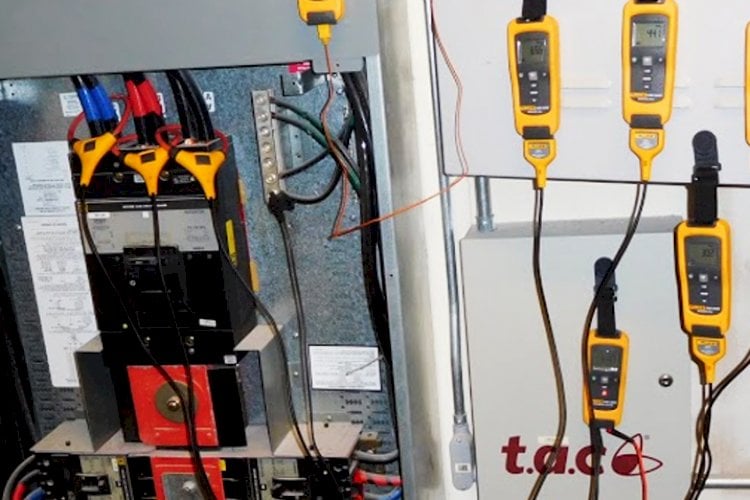Managing electrical projects these days is getting more and more complex. No longer do we have the days where we can simply design and install a basic electrical system without having to deal with new and intricate regulatory requirements. From new electrical safety issues, to being asked to predict the soil conductivity in the earth around your client’s site, to ensuring that electromagnetic disturbances won’t interfere with your clients’ critical electronic systems, electrical engineering has never been more complicated.
Compounding the problem is that even the largest electrical engineering firms often cannot justify the costs of employing such expertise for these unique engineering specialties on a full-time basis. Especially given that the average employee only stays with an employer for 4.1 years, making the development of such talent in-house nearly untenable.
The executive management at many electrical engineering firms is commonly finding their engineering staff needing assistance for guidance on a number of problematic questions such as:
Question #1
How do I know if my project has a ground fault that must clear back through the earth? Will it generate hazardous voltages that could injure people? Will my company we liable?
Question #2
I know that OSHA is cracking down on electrocution risks in the workplace; OSHA calls electrocutions one of the “Fatal Four” leading causes of fatalities, and just handed out a fine to a construction firm that was nearly a quarter of a million dollars! How can I protect my company for such liability?
https://www.miamiherald.com/news/state/florida/article253257033.html
Question #3
How can my Electrical Engineers be sure that my projects are grounded properly and if we are subject to OSHA’s “Appendix C to §1910.269 -- Protection From Hazardous Differences in Electric Potential”?
https://www.osha.gov/laws-regs/regulations/standardnumber/1910/1910.269AppC
Question #4
The National Electrical Code (NEC) under NEC 250.191 and 250.194 now requires electricians and electrical engineers to protect persons from electrocution by referencing “IEEE 80-2013, IEEE Guide for Safety in AC Substation Grounding” when dealing with any voltage over 1,000 volts, including the bonding of metal fences. This seems to be a highly specialized subset of electrical engineering, and I have a lot of projects that may fall under this umbrella. Frankly, nearly every site I deal with has a transformer with a primary side that is over 1,000 volts… does this apply to my jobs?
Question #5
My client wants me to ensure that their grounding electrodes will be isolated and that they must meet a specific resistance-to-ground… how do we predict what the soil and how a grounding electrode is going to perform? Also, it seems to us that the isolated ground is going to cause the earth to become part of the fault-current-path, a violation of NEC 250.4(A)(5). How do keep my client happy and install an isolated ground without violating the NEC and potentially causing a human-safety issue?
Question #6
I have a client who wants to upgrade the electrical system on their small shopping mall by adding emergency backup generators and a Franklin-style lightning protection system. They want the generators added to just a single building, but the facility is actually a campus made up of three buildings surrounding a parking lot, with two separate service feeds, a common lighting system, and a common data-communication system. The fire department is additionally asking the emergency generator to power the fire sprinkler pumps and they want their own ATS system. This city inspector is concerned that we will have “ground loops”. I don’t even know what a “ground loop” is, and I don’t this city inspector knows what one is either, but he is pointing to NEC 250.6 and saying he thinks we are in violation. On top of all that, the owner’s insurance company wants a written Lightning Risk Assessment by a 3rd party! Honestly, my Electrical Engineering team is great, but they just need a little more expert help.
Question #7
I finally found some electrical life safety experts who aren’t trying to sell us products and can definitely help me with my project, but they are expensive… and no one at my firm budgeted for such an expense. Honestly, I feel like I have let my company down because my coworkers think as an Electrical Engineer, I should know everything about electricity. That’s like asking a doctor to be a specialist in every possible field of medicine!
How was I supposed to know that step & touch voltages can cause the fibrillation of someone’s heart from simply walking near a high-voltage site! I was never taught about this phenomenon in school! No one person can be an expert in every topic related to electricity!
The aforementioned questions are a small sample of the many that arise respective to electrical grounding engineering topics. Once construction starts, the cost of adjusting electrical engineering issues goes exponential. This is of course true in every field of engineering, but in no other area of expertise is it more ignored than in grounding and earthing. Before you start pouring concrete, you should have already considered whether you could have additionally used that piling as a free grounding or earthing electrode. Do you have lightning risks? Is that piling critical to the structural support of the building? What will happen should lightning strike and it blows out that piling because it wasn’t properly earthed to handle the enormous energies?
What if you could have used the rebar that was already in the slab-on-grade as a method of adding electrical protection to the personnel working in the electrical room for a mere hundred dollars? But now that you have already poured concrete, it may cost tens of thousands to install the proper protection. A simple 15-minute review by an expert during the design stage could not only have saved thousands of dollars, but may potentially save a life as well.
Take a moment to consider the building you are sitting in now. How many current-carrying conductors are there in the entire building? Now, think about how many grounded or earthed conductors there are… For most electrical circuits, you have a single (1) hot conductor, and two (2) grounded/earthed conductors. That’s two-thirds of the conductors that are grounded/earthed! Add to that list, the shield wires in Coax, CATV, CAT5/6 cables, alarm system, and other telco and data lines. Now add any Lightning Protection Systems, the steel rebar in your foundations, building steel, electrical conduit and raceways, water pipes, swimming pool equipotential grounds, gas pipes, and fire sprinkler systems. You may have special grounding systems for sensitive electronic systems, and equipotential grids for your industrial equipment, isolated grounds, special data system grounds, and even isolation transformers. Of course, don’t forget about every single touchable metal object in your structure! And we haven’t even mentioned your grounding and earthing electrode systems such as ground rods, ground plated, ground rings, electrolytic electrodes, concrete-encased electrodes, etc. All these components make up the structure of your grounding and earthing system, and it is far more extensive than any set of phase/hot wires. So why do people seem to spend so little engineering time on the single biggest electrical engineering necessity (i.e., grounding) in their building?
One reason for the lack of expert grounding design assistance on projects appears to be the administrative burden and the justification maze. Many engineers see this process as frustrating, with a common theme:
- Now, I must go to my boss, get special permission to hire these experts (which will take weeks), fill out a small mountain of paperwork,
- Once these experts are on board, it will take hours of my time getting them up to speed on the job, just to get a formal report with results that I will then have to integrate back into our system. It's double or even triple work!
- Looking at the future types of jobs my company is getting involved in, we're just going to need this expertise again and again on job after job, and I will need to go through this process many times, or perhaps avoid it although I know the future risks may increase…
One might frame the Problem Statement as follows:
How do builders/developers and engineering firms acquire “on-demand” access to electrical engineers with specialized grounding expertise on a cost-effective basis yet avoid the administrative maze required for each needed interaction?
One solution would be to establish an Advisory Retainer Contract with a related engineering consultancy firm enabling their expert engineers to become incorporated with the Project Team. This approach would streamline the administrative burden considerably, and increase the expert engineers’ ability to contribute to design reviews and attend weekly engineering meetings. This relationship would often accelerate the project progression as far as electrical engineering matters and ensure early design of best grounding practices are on the drawing board… at the optimal phase of the project. The typical cost savings for effective and timely grounding designs can be substantial compared to implementing design requirements after construction is underway or completed. Just think of the cost-savings in the reduction of paperwork alone! The further benefits are to obtain expert advice on all projects and ensure no hidden or unknown critical life safety issues will exist in any project, thereby reducing legal liability.
An Advisory Retainer Contract is the “sweet spot” for many project managers that seek to ensure their projects have the most qualified experts involved on these complex electrical engineering designs, while managing the associated costs to strictly a limited monthly expense that is far less than employing a full-time expert engineer on staff. Yet the project manager acquires the assurance that ALL projects are in full compliance with all critical Federally mandated electrical safety requirements. Other benefits include the positive themes with your company’s clients regarding the involvement of top-rated industry experts on their job.
Here at E&S Grounding Solutions, we get a lot of phone calls and emails from electrical engineers and electricians from all over the world, and it is generally the same issue over and over (and over) again. We are asked to help solve problems after they have appeared post-construction, and although we always find solutions for their needs, we unfortunately also often state: “Why didn’t you call us at the start of this project when it was still in the design phase? We could have saved you a lot of money!”
E&S Grounding Solutions has been listening to our Clients and we now offer an “Electrical Grounding & Earthing Advisory Program” specifically for those companies that simply need some regular assistance on grounding and earthing issues without having to fill out paperwork every time one of your team members has a question. We would love to hear from you about what services you could use: a quick review of your electrical drawings, training of personnel, attendance of a grounding and earthing expert in meetings, regular access to one of our expert grounding engineers by your team, or perhaps something else. Give us a call at 1-310-318-7151 California time (PST) to discuss your company’s unique needs.
E&S Grounding Solutions resolved the issue of lightning strikes damaging the Bureau County Sheriffs headquarters' communications tower. They designed a grounding solution that followed industry standards, resulting in reliable communications services for almost a decade without any downtime from lightning strike damage.





